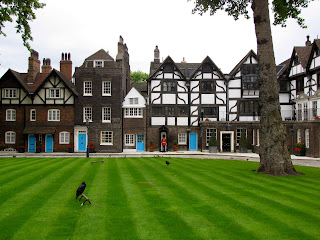The Tower of London situated along the River Thames has played a prominent role in English history. A grand palace early in history, also was used as a prison since at least 1100. Royal guards still live on the premises. The Tower has served variously as an armory, a treasury, a menagerie, the home of the Royal Mint, a public records office and the home of the Crown Jewels of the United Kingdom.
The Royal Menagerie is first referenced during the reign of Henry III. A menagerie was a form of keeping common and exotic animals in captivity. The King's polar bear had attracted a many locals when it went fishing in the Thames. The lions were kept in the Lion Tower. By the 18th century, the menagerie was open to the public; admission cost three half-pence or the supply of a cat or dog to be fed to the lions.
Royal guards still train and live in the compound protecting the Crown Jewels. The Crown Jewels have been kept in the tower since 1303 after they were stolen from Westminster Abbey.
A view of the inner ward.
Anne Boleyn was not the only person to have lost her life in the Tower grounds. Their names are sketched on a beautiful glass monument on Tower Green.
I read several different stories about the death of Ann Boleyn but the story told by one of the guards stated Ann did not see a coffin and thought the king would grant her mercy. After her execution, it is said she was buried in an pine box that held the arrows for the archers. The pine box was stated to be buried here.
The apartment still occupied on the London Tower grounds. Royal Guards still man several of the entrances.



















No comments:
Post a Comment